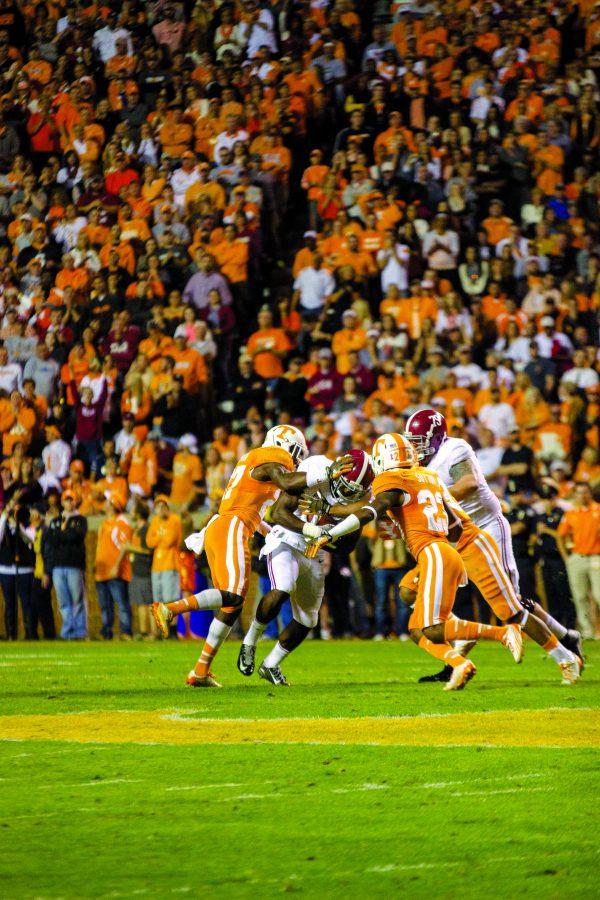While at an Alabama football game during the 2013 season, Steve Shepard heard the cracking sound of the players’ football helmets colliding during a tackle, and he started to wonder – not about the outcome of the game, but about the relationship between helmet collisions and concussions.
Shepard, a professor of mechanical engineering at The University of Alabama, has an interest in acoustics and vibrations for the past 10 years, he has studied inverse methods, where he analyzes the effect of something and attempts to determine the cause. After hearing the sound the football helmets made when they collided, he began to explore the sound frequencies that occur and said he hopes to eventually determine what frequencies correlate with concussions.
“I’d love nothing more than to go to a high school football game and see somebody down there with an iPhone, and then whenever there’s a collision, they get a little alert on their phone that tells them there was a collision here at this time,” Shepard said. “Then they can go back and look at video and determine what players were involved.”
Through the Emerging Scholars Program, Brandon McChristian, a sophomore majoring in mechanical engineering, met Shepard and has helped him by performing preliminary experiments for the study. McChristian created a pendulum using football helmets and compared drops heights and the impact they made. Using a soundproof chamber in the AIME Building, they were able to show that as the impact velocity of the helmet goes up, so does the noise level.
“With this if you’re watching the football game and you hear that helmet-to-helmet impact, it’s a really distinctive class noise,” McChristian said. “So you should be able to, scientifically speaking, hone in on that on specific sound that it creates and analyze it.”
The next part of the experiment will involve analyzing values and seeing at what point concussions occur, but Shepard said they need new instrumentation to proceed with the experiments.
According to Shepard, there are already devices and sensors capable of measuring impact, and they are mounted on the back of helmets. However, the cheapest sensors in the market sell for $60 to $70 and they have a light that illuminates when an impact reaches a certain force.
“To be effective, you have to have somebody sitting on the sideline watching all these helmets seeing if there’s any lights going off,” he said. “And for instance, Tuscaloosa County High School has maybe 60 football players on the varsity team alone. That’s $60 times 60, and that adds up really quick.”
More advanced sensors range anywhere between $150 and $1,000, and although D1 teams like Alabama and NFL teams could afford such equipment, Shepard said high school teams do not have the budget for the expense. He said he hopes his research will ultimately pave the way for low-cost systems that can be mounted in high school and college football stadiums to detect high-impact collisions through sound waves.
“This would help them realize that an impact occurred on the field where someone could have a concussion, and they can kind of look for that,” McChristian said. “Especially when you think younger kids, they might not notice the symptoms or be anywhere familiar with them. They could be dizzy or hot and might think they’re just dehydrated, and they might not realize they have a concussion if it’s some ten- or twelve-year-old kid in football games.”
Shepard received a patent on his research, and he submitted a proposal for more funding from the National Science Foundation. McChristian, who ultimately wants to work in sports gear testing, plans to continue working with Shepard to build on their preliminary research.
“Students can play an important part in the research process,” said Mary Katherine Shreves, director of the Emerging Scholars Program. “Students can sometimes provide faculty with a unique perspective on a topic or issue, and they are more than capable of helping faculty make a study a success.”
Through the Emerging Scholars Program, McChristian presented the findings of the preliminary research at the Undergraduate Research and Creative Activity Conference on April 7, and he received the prize for 2nd place in the Emerging Scholars division of science, mathematics and engineering.









